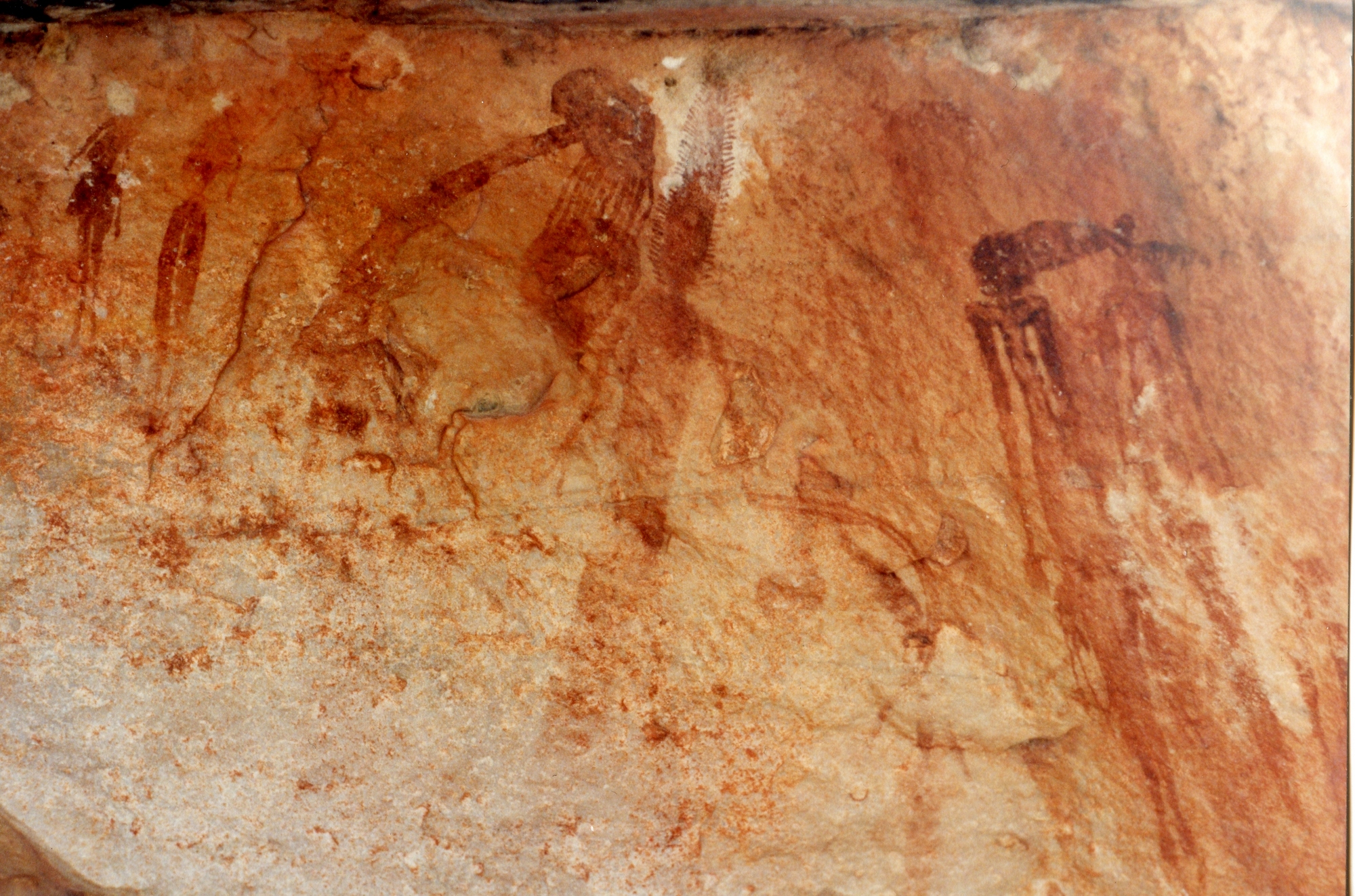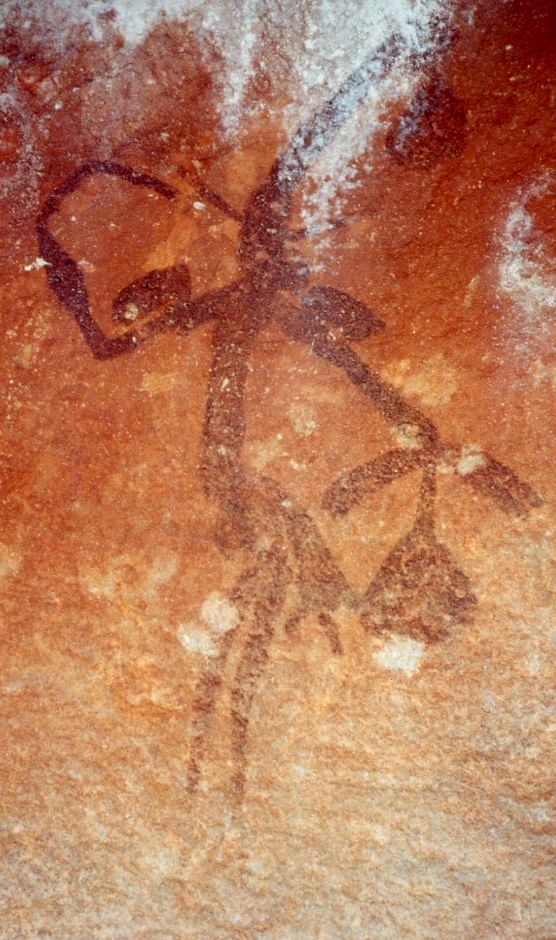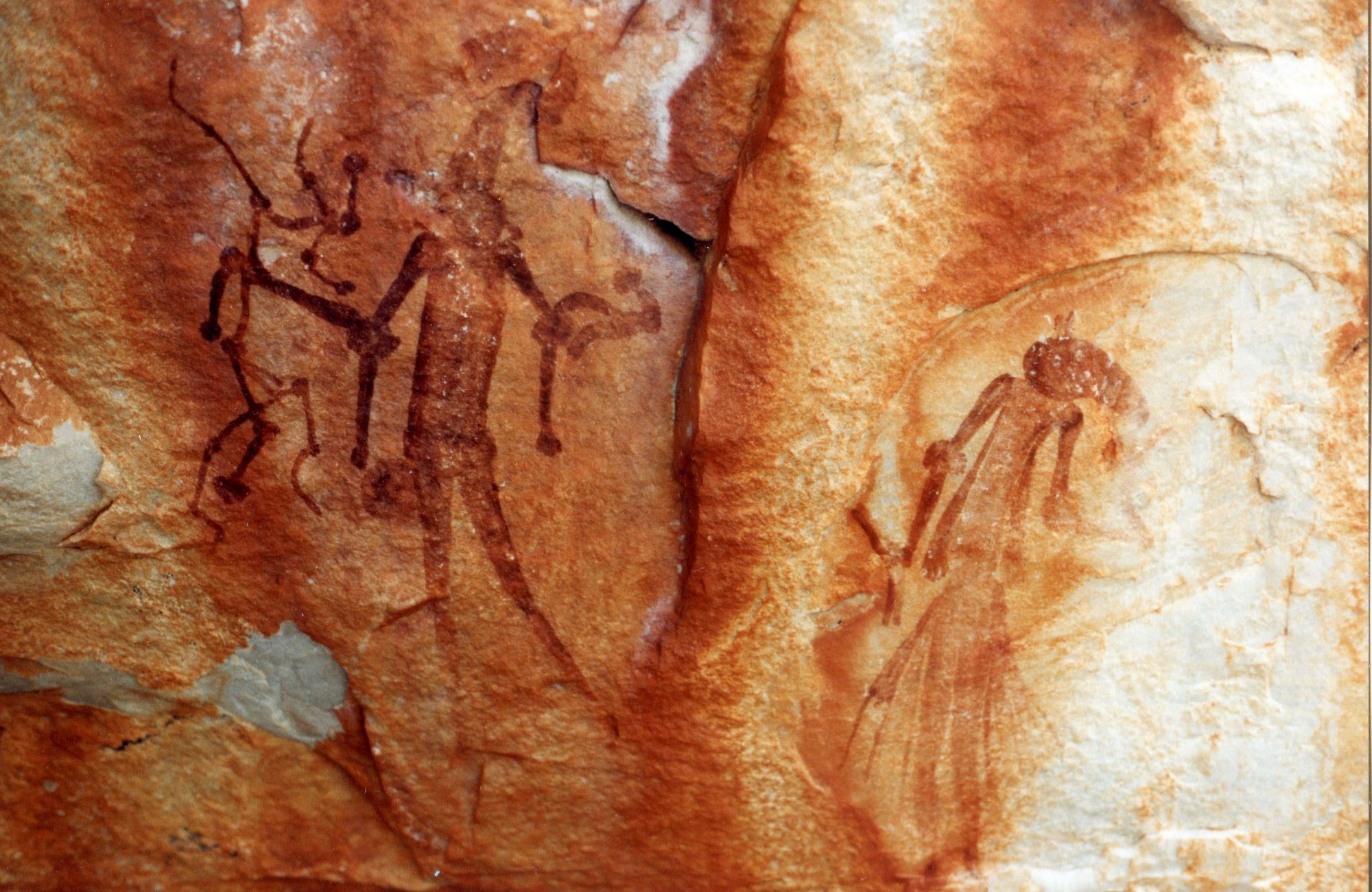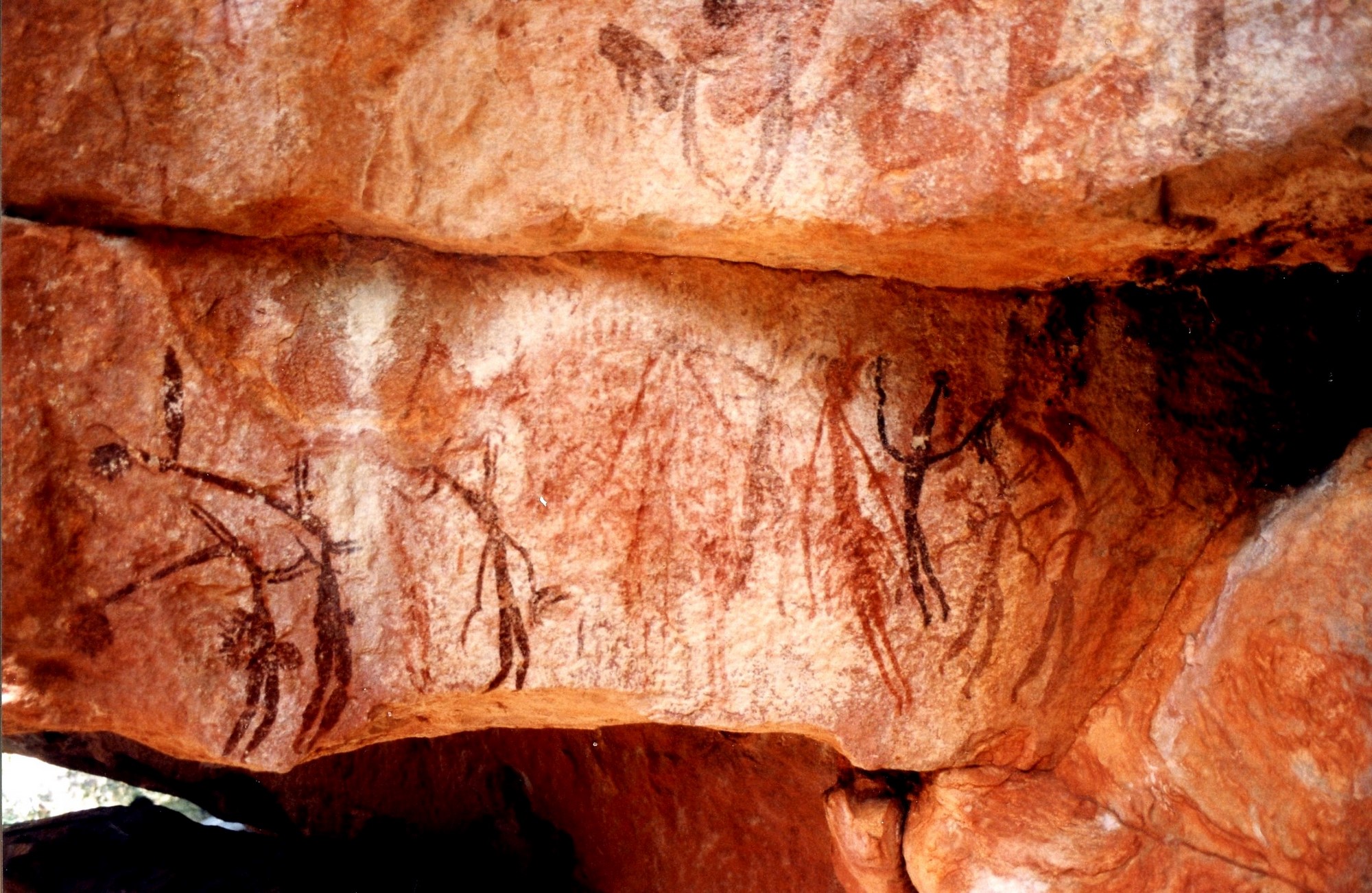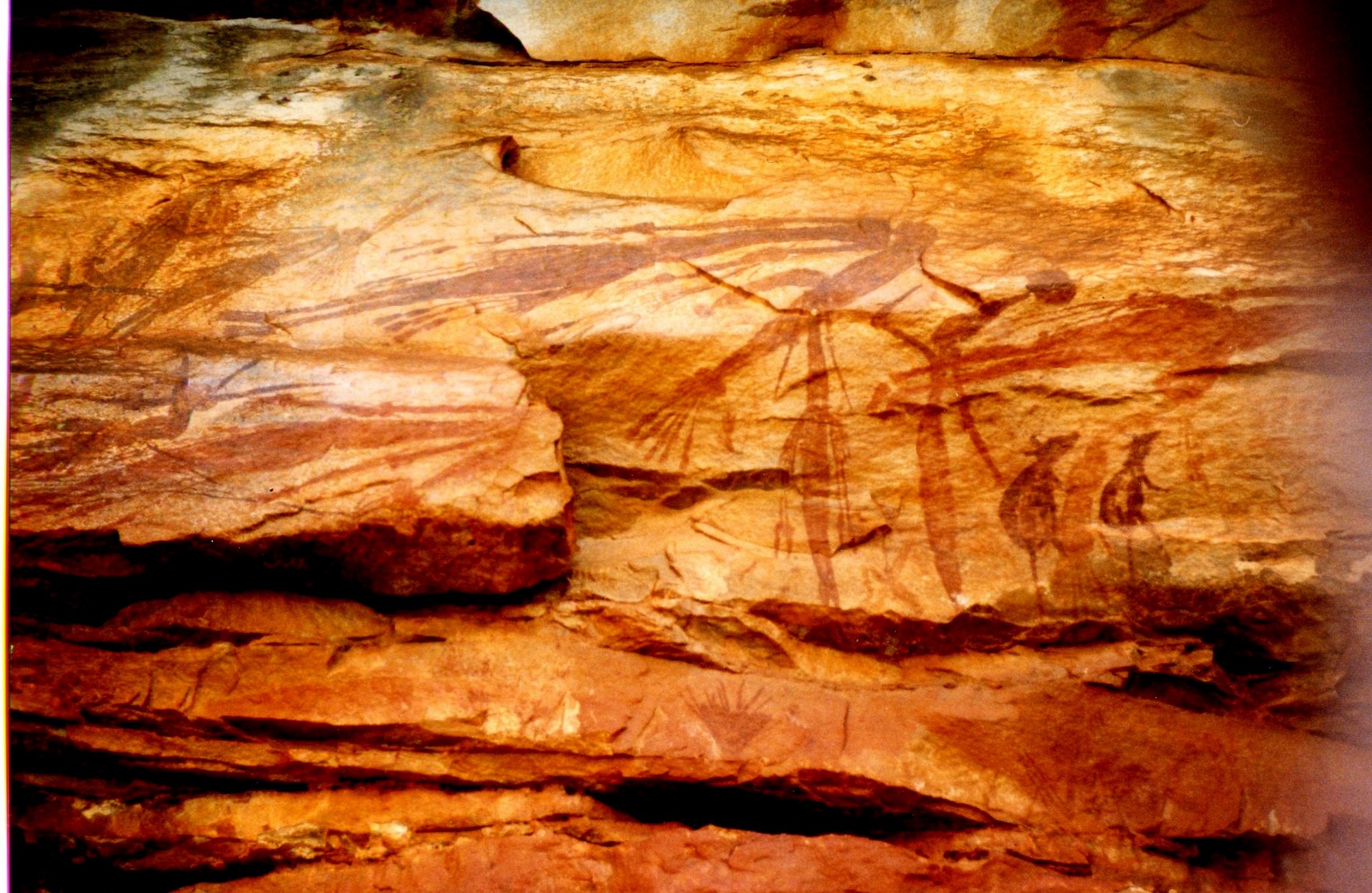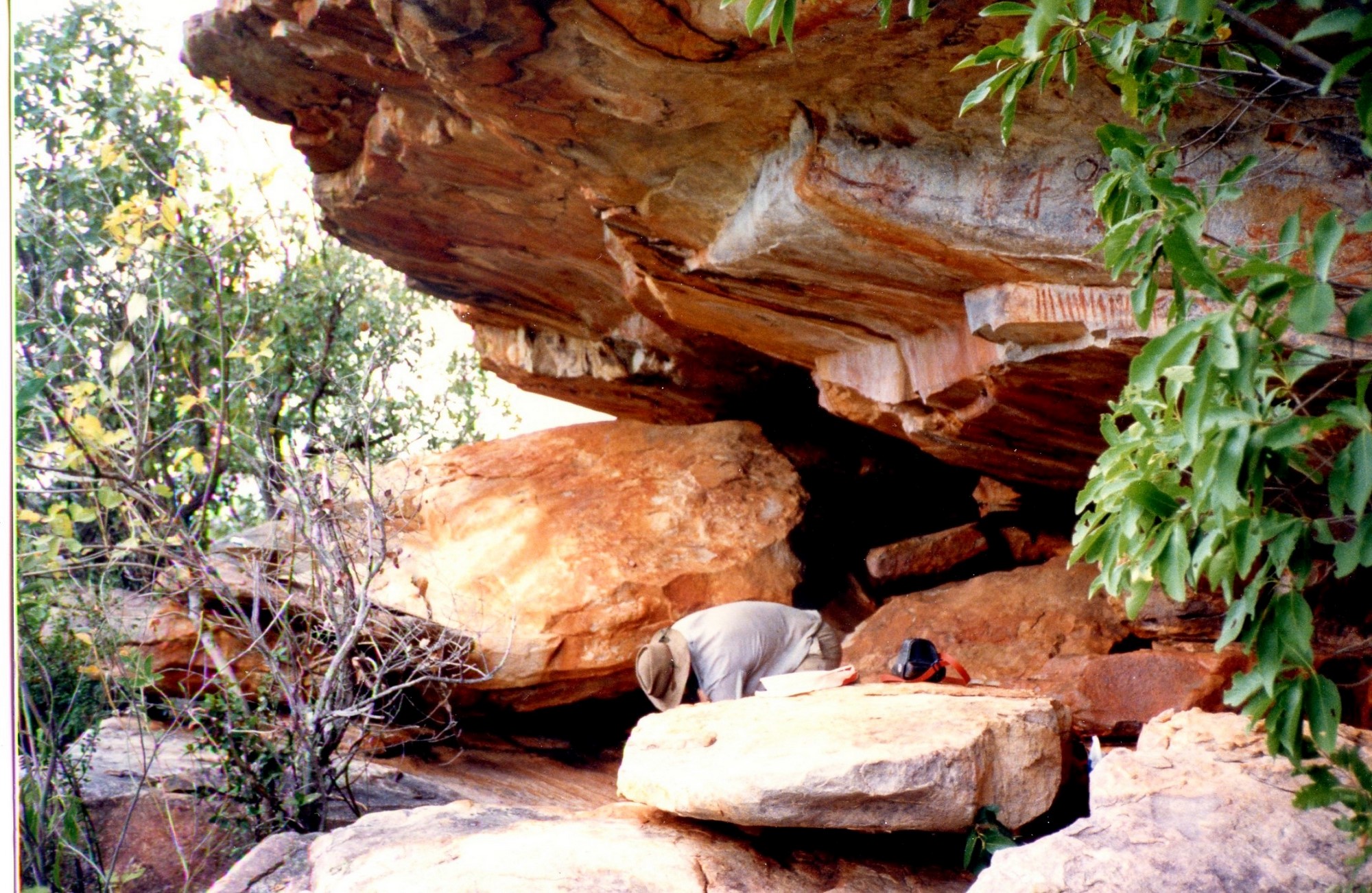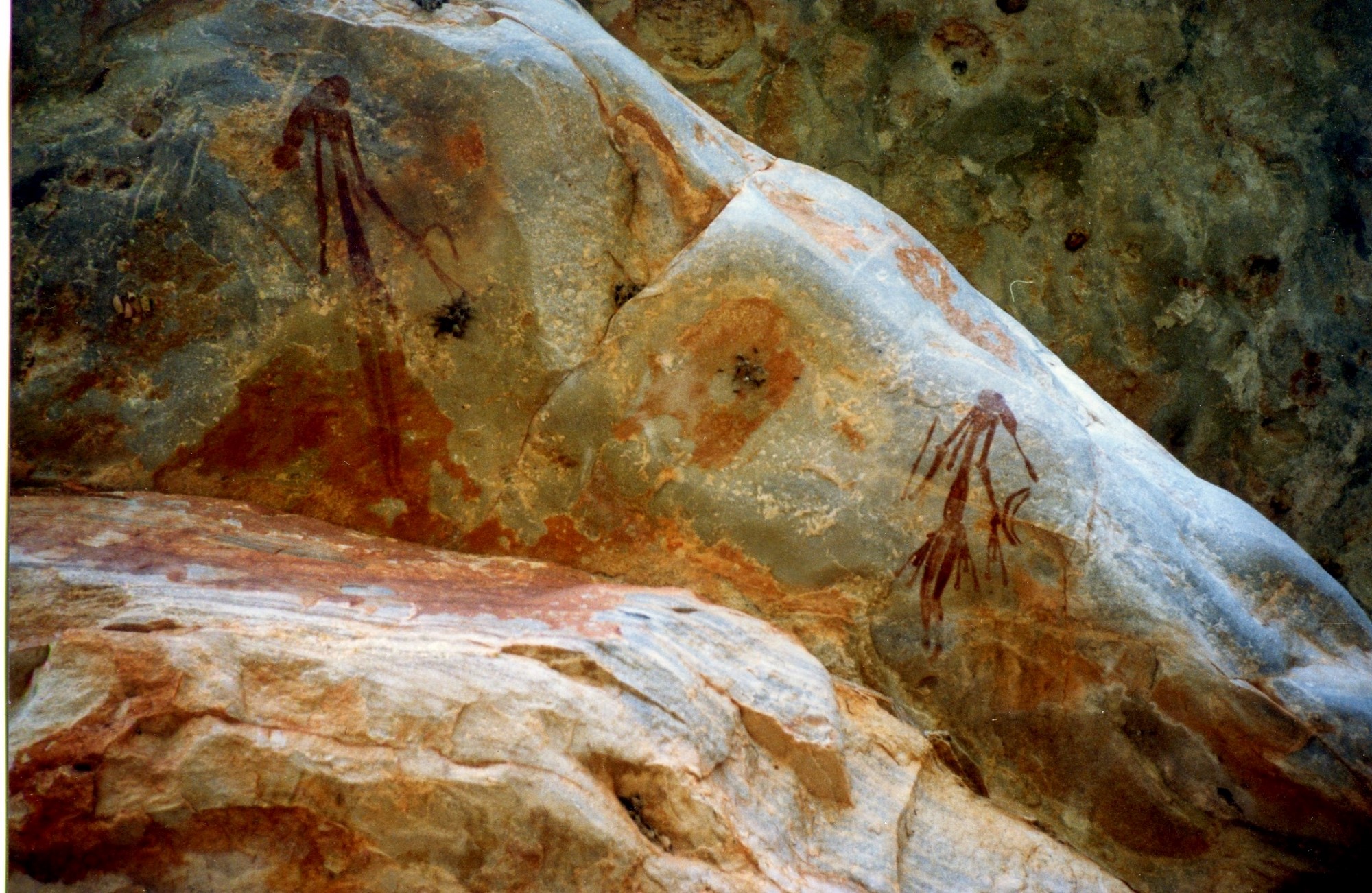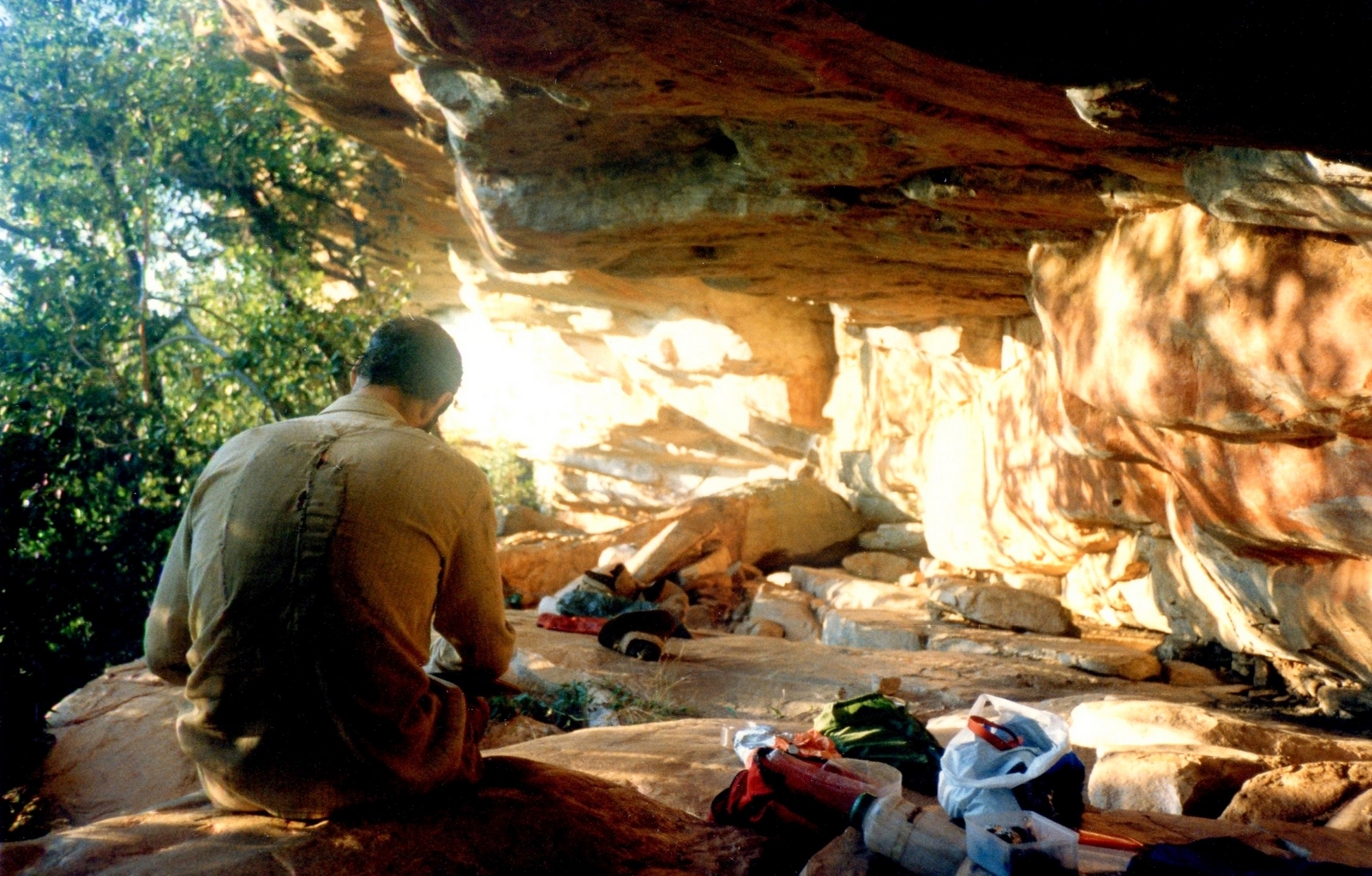There is something unique about searching for rock art in the Kimberly – struggling through the bush, climbing to rock shelters, and finally discovering these beautiful rock paintings. The feeling of seeing something nobody else has seen for many, perhaps hundreds, of years is something very special, and I would often just sit and think about that when I discovered a new gallery.
We discovered these paintings on long bushwalks – 4-6 weeks in the bush, living and walking in the country. The art had been little studied until then (mid-1980s). Now it is well known. In those days the bush was empty – just us and the rocks.
These rock art figures are around 18,000 years old – there is some doubt about this, since there has been no reliable dating yet. 18,000 years ago the land bridge to New Guinea was open, and people from the north could come across the NW Australia.
As a doctor working in the North for 10 years I traveled regularly to the communities in the Kimberly and Arnhem Land. Because of my interest in these figures I wanted to know whether they were anything to do with the current Aboriginal peoples. I knew many of the old people as patients and friends, and showed them my pictures. They all said the art was nothing to do with them – their own art is the Wandjina (see that gallery). Their interpretation of these pictures was of ‘scratching’ or ‘rubbish’ pictures. They had an explanation that they were done by little birds in the bush.
Personally I think they are related to the Xray art of Arnhem Land, but simpler, which would make sense if the people came across from the Kimberly then to the East, improving and modifying their technique as they went.
As I was drawing them every day, and living with these thoughts for weeks on end (we did 5 of these trips, along all the major rivers, and found around 400 sites – perhaps 4000 paintings) I evolved some ideas about their provenance:
The pictures in one area tend to be drawn by one or two artists, since the styles are different in subtle ways and do not vary along one stretch of river. You only find out about something properly by drawing, and I was drawing these day after day – your hand has to move in a certain way to copy one artist, and in a different way for another one.
Areas of the Kimberly have specific styles (for example the Roe River art is different from the Drysdale River art).
I did a study of the attachments – bags, epaulets and so on – from most of the sites I saw. They again tend to be similar in type, but drawn differently in different areas. They seemed to me to be similar to the badges of office of officials in our time – police, firemen and so on. In a sense they are icons describing a persons position and status.
The striking feature of these images is the elongated shape, which is not seen in other art. This puzzled me for a long time until one day I saw the shadow of a group of people walking in the early morning sun – the proportions of their shadows are similar to the proportions of these images, and I think the images are drawings of the ‘shadow world’ of the people at the time.
